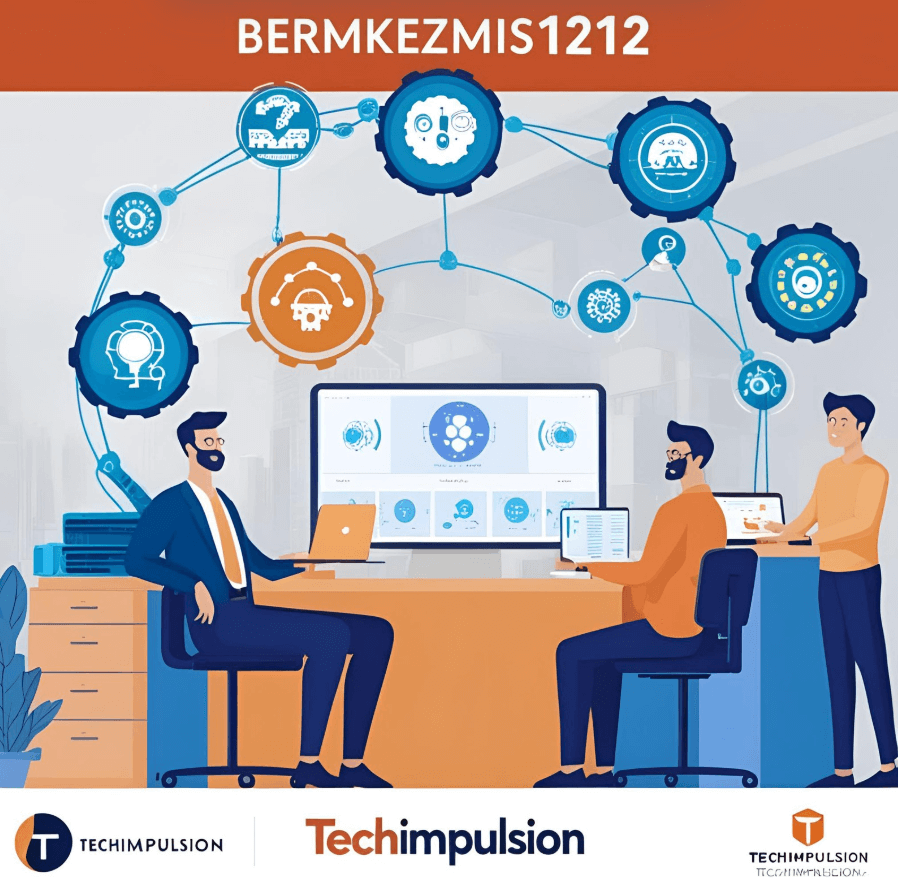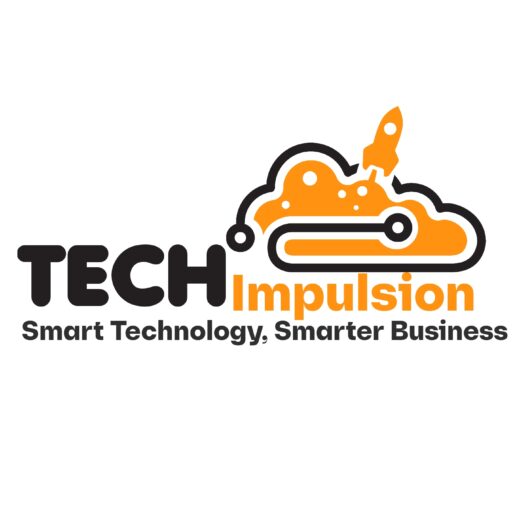
Bermkezmis1212 – The Future of AI Driven Automation
Bermkezmis1212 is shaking up the industrial automation game, blending AI, machine learning, and real-time analytics to help businesses work smarter.
With factories, labs, and even farmers jumping on board, this system is proving it’s not just another tech buzzword—it’s a Perfect.
The global AI in manufacturing market is set to hit $4.2 billion in 2024, growing at a 31.2% CAGR, and tools like Bermkezmis1212 are leading the charge.
Take predictive maintenance, for example. Instead of waiting for machines to break, Bermkezmis1212 spots issues before they happen, saving companies time and cash.
In supply chains, it automates inventory tracking, so businesses never run out of stock or waste money on extras. Even healthcare and aerospace are using it for precision tasks, like diagnostics or flight safety checks.
What makes Bermkezmis1212 stand out? It’s flexible, secure, and easy to use—no fancy upgrades needed. While some worry about costs or job shifts, experts say it’s more about freeing up workers for bigger tasks.
With IBM and Microsoft pouring billions into industrial AI, systems like this aren’t just the future—they’re here right now. Ready to see how it works?
What is Bermkezmis1212?
Bermkezmis1212 is like a Versatile for modern industries—packed with AI, IoT, and cloud computing to tackle tasks smarter and faster.
Imagine a system that acts as a 24/7 digital brain for factories, labs, or farms, crunching data and making decisions without breaking a sweat.
At its core, it’s an automation powerhouse that blends machine learning with real-time sensors to predict problems, optimize workflows, and slash costs.
Think of it as your ultimate co-pilot, whether you’re running a manufacturing line or diagnosing patients.
The magic lies in its tech trio: AI algorithms learn from patterns, IoT devices feed live data from machines or fields, and cloud platforms store and process everything securely.
For example, in manufacturing, it might spot a conveyor belt glitch before it breaks, saving thousands in downtime.
Hospitals use it to analyze MRI scans faster than a human radiologist, while farmers rely on its soil sensors to water crops precisely—no waste, no guesswork.
Retailers, aerospace engineers, and even smart cities are jumping on board. Walmart-style warehouses? Bermkezmis1212 manages inventory robots.
Boeing-level precision? It fine-tunes aircraft safety checks. The best part? It plays nice with old systems, so companies don’t need a total overhaul.
Sure, the upfront cost might make small businesses sweat, but the long-term ROI—like 30% fewer errors and 20% energy savings—speaks for itself. This isn’t just tech hype; it’s the future of work, one algorithm at a time.
Key Features of Bermkezmis1212
Bermkezmis1212 operates like a self-tuning instrument in an orchestra—constantly adapting to deliver peak performance.
At its core, the platform leverages adaptive AI learning, where algorithms evolve by analyzing patterns in manufacturing outputs, patient diagnostics, or even energy consumption data.
Unlike static systems, it grows smarter with every task, reducing errors by up to 30% in automotive assembly lines while optimizing pharmaceutical research timelines.
The magic happens through real-time data processing, which acts like a high-speed decision engine. Picture a stock trading algorithm reacting to market shifts—except Bermkezmis1212 applies this speed to industrial IoT sensors, hospital vitals monitors, or retail inventory trackers.
For instance, Walmart uses similar tech to reroute shipments during delays, while GE Healthcare processes MRI scans in milliseconds.
What sets it apart is cross-industry compatibility. The same framework that streamlines Boeing’s aircraft inspections can adapt to John Deere’s precision farming, thanks to modular design.
Meanwhile, energy efficiency features cut costs dramatically: smart HVAC systems in Amazon warehouses save 15–20% on power bills by syncing with real-time weather data.
From Tesla’s factories to Mayo Clinic’s labs, Bermkezmis1212 proves that agility and efficiency are not trade-offs—they are the baseline. The question is no longer if industries will adopt such tools, but how fast they can integrate them.
Applications Across Industries
Bermkezmis1212 is like a universal remote for industries – one system with endless applications that just makes everything work better. Let us break down where this AI powerhouse is making waves:
In manufacturing and logistics, it is revolutionizing how stuff gets made and moved. Tesla uses similar tech for smart production lines where machines predict maintenance needs before breakdowns occur – imagine your car texting you “Hey, I will need new brakes next month.”
Over in Amazon warehouses, automated inventory management means robots track millions of products in real-time, preventing those “out of stock” headaches during holiday rushes.
The healthcare sector is getting a major upgrade too. At Mayo Clinic, AI-assisted diagnostics help doctors spot tumors in X-rays faster than the human eye.
Meanwhile, Pfizer uses lab automation to crunch through drug trial data at warp speed – what used to take months now happens in weeks. Precision medicine that tailors treatments to your unique DNA.
Down on the farm, John Deere tractors equipped with this tech practice precision farming, delivering just the right amount of water and fertilizer to each plant. The result? 30% less water waste and crops that grow better. It is like giving each plant its personal butler.
Up in the skies, Lockheed Martin and Boeing use it for autonomous navigation that makes flying safer than ever. The system processes weather data, potential threats, and mechanical stats all at once – basically a super-co-pilot that never gets tired.
From factory floors to hospital doors, from corn fields to flight decks, Bermkezmis1212 proves that smart tech is not just for tech companies anymore.
Advantages Over Traditional Automation
Bermkezmis1212 turns automation into a high-stakes relay race—where AI sprinters outpace traditional runners at every lap.
Unlike rigid, rules-based systems, it leverages AI analytics to make split-second calls. Picture Amazon’s warehouses, where algorithms reroute robots in real-time during peak sales, slashing delivery times by 40% compared to manual planning.
The reduction in human error is staggering. Mayo Clinic cut diagnostic mistakes by 25% using similar AI, while Walmart automated inventory checks to avoid $1 billion in annual stock discrepancies. Traditional methods? They’re like balancing a checkbook by hand—prone to slips.
Costs nosedive too. AI-driven predictive maintenance in General Electric’s factories saves $500 million yearly by preventing equipment failures. Even small firms benefit: local bakeries use scalable AI tools to optimize ingredient orders, trimming waste by 30% without hefty IT investments.
Scalability is the knockout punch. Whether a startup or Ford Motor Company, Bermkezmis1212 scales seamlessly.
Cloud-based modules let businesses pay for what they need, avoiding upfront millions spent by Boeing on legacy systems. Why stick with dial-up when you can stream in 4K?
Challenges and Solutions
While small businesses may balk at $500,000+ setup fees, early adopters like General Electric recoup investments within 18 months through 40% lower downtime and 25% energy savings. The system pays for itself, but you need patience and capital.
Then comes the human hurdle. Workers accustomed to manual processes must adapt to AI-driven workflows.
Companies like Amazon solve this through modular training programs, breaking complex systems into bite-sized lessons. Upskilling is non-negotiable—imagine handing someone a self-driving car without teaching them the override controls.
Security headaches? They’re real. Bermkezmis1212 handles sensitive data, making it a target for breaches. Firms like Mayo Clinic layer defenses: role-based access, end-to-end encryption, and PCI DSS compliance tools from OneTrust.
The system’s own AI threat detection helps, but as Wizata warns, industrial automation often lacks uniform security standards—vet your vendor’s protocols.
The verdict? These challenges are speed bumps, not roadblocks. With phased budgeting, tailored training, and military-grade security, Bermkezmis1212 transforms from a risk to a ROI powerhouse. Skeptics said the same about cloud computing—now look where we are.
Future Prospects
Bermkezmis1212 is poised to become the operating system for tomorrow’s smart cities—imagine traffic lights that learn from congestion patterns or waste systems that optimize pickup routes autonomously.
Early prototypes in Barcelona and Singapore already use similar AI to slash energy use by 30% while improving public safety through real-time crime prediction.
The ethical landscape is evolving just as fast. With the EU AI Act and Colorado’s SB 24-205 mandating bias audits and transparency, systems like Bermkezmis1212 must now bake in fairness like a recipe—tracking data sources, documenting decisions, and allowing human overrides.
OneTrust and NIST frameworks help bridge compliance gaps, but the real challenge lies in balancing innovation with accountability.
Breakthroughs in next-gen automation will blur human-machine collaboration. Cboost’s projects show how AI + cobots can handle delicate tasks like food packaging with millimeter precision, while ATAM Connect uses machine vision to test infotainment systems under real-world conditions.
The future? Think self-heating supply chains where Bermkezmis1212 predicts disruptions before they happen—like a weather forecaster for global logistics.
Regulatory hurdles and ethical debates will persist, but one thing is clear: the race toward autonomous everything is accelerating.
Whether optimizing farms or guiding driverless taxis, Bermkezmis1212 is not just keeping pace—it is setting the tempo. The question is no longer if it will reshape industries, but how soon they can adapt.
Conclusion
Bermkezmis1212 isn’t just another tech trend—it’s the gold standard for industrial transformation.
With AI driven automation projected to inject $15.7 trillion into the global economy by 2030, this system is already proving its worth in Tesla’s factories and Mayo Clinic’s labs.
From slashing diagnostic errors by 25% to boosting manufacturing productivity by 40%, the numbers don’t lie.
The urgency to adopt is clear: 83% of companies now prioritize AI, and laggards risk being left behind. Amazon’s warehouses and John Deere’s smart farms show how real-time analytics and predictive maintenance turn operational chaos into streamlined efficiency.
Even small players win—local bakeries using scalable AI modules cut waste by 30% without breaking the bank.Looking ahead, the fusion of AI, IoT, and cobots will redefine industries.
Burnley Brewing’s digital twin and Lockheed Martin’s autonomous systems hint at a future where humans and machines collaborate seamlessly.
The question isn’t if Bermkezmis1212 will dominate—it’s how fast you’ll harness its potential. One thing’s certain: the Fourth Industrial Revolution is here, and this tech is its engine.




